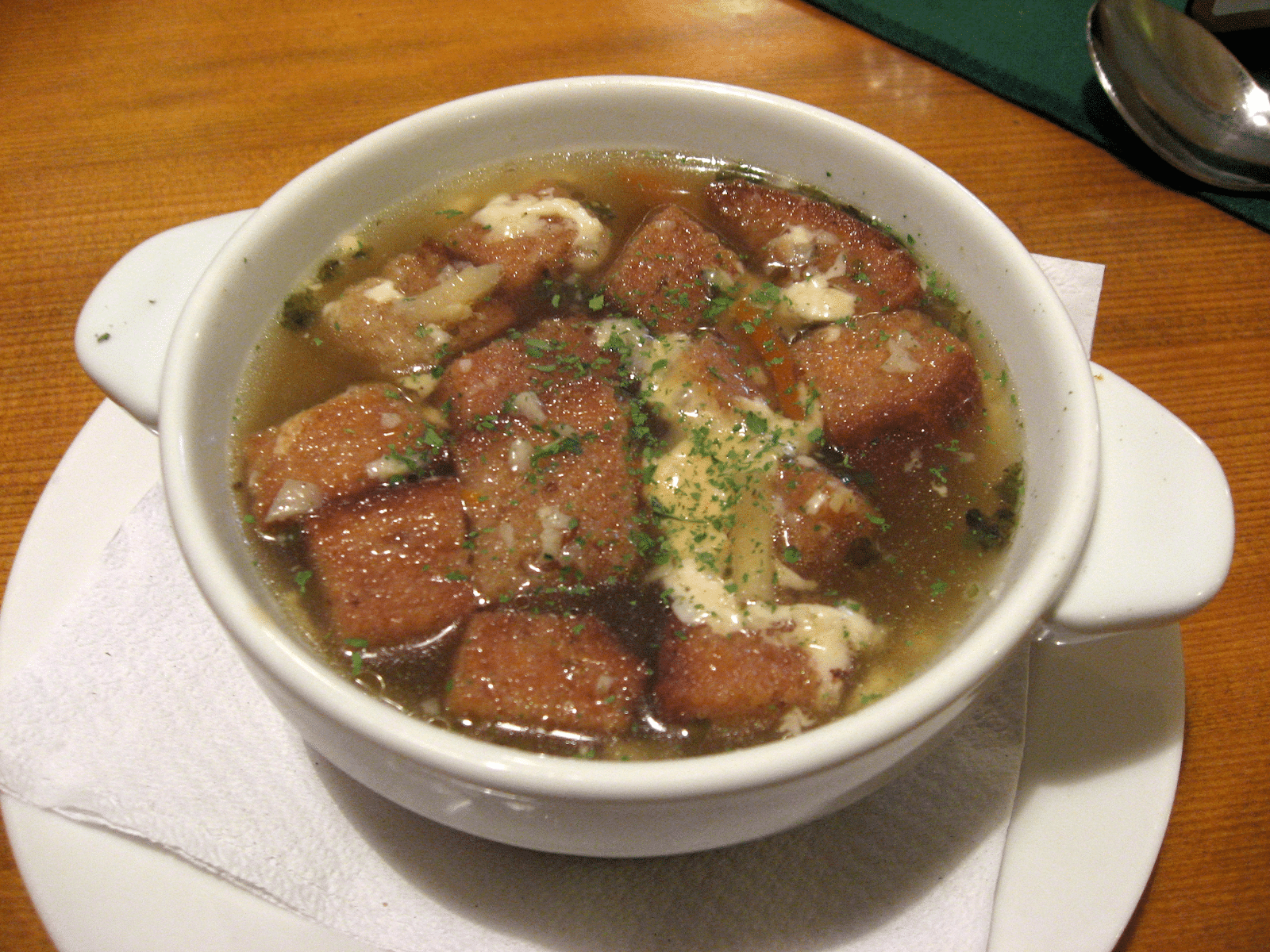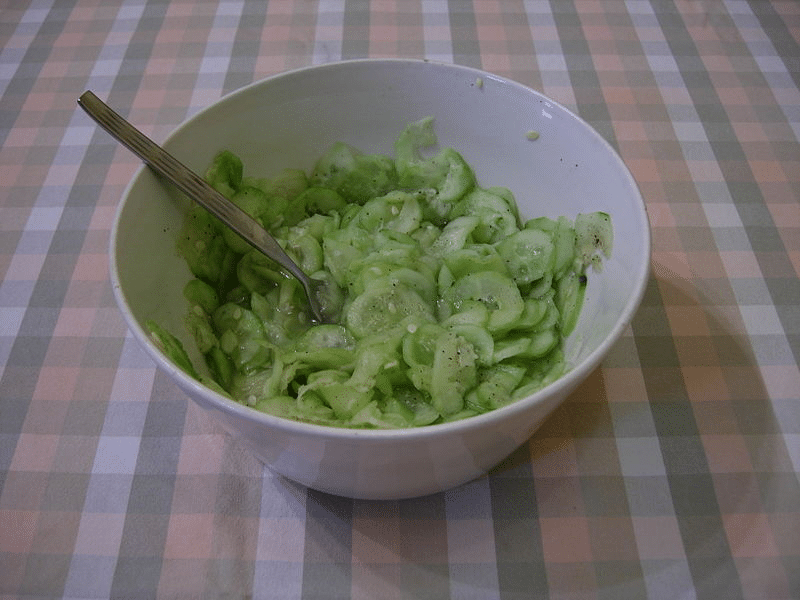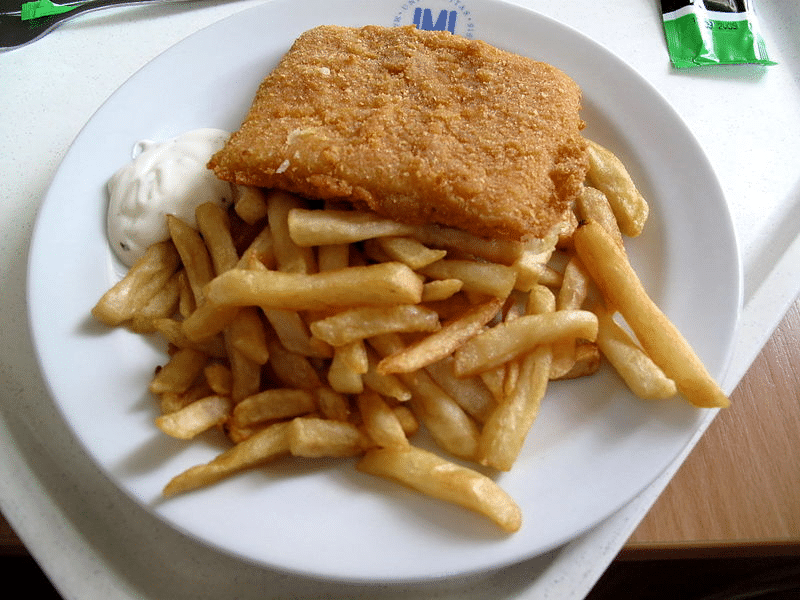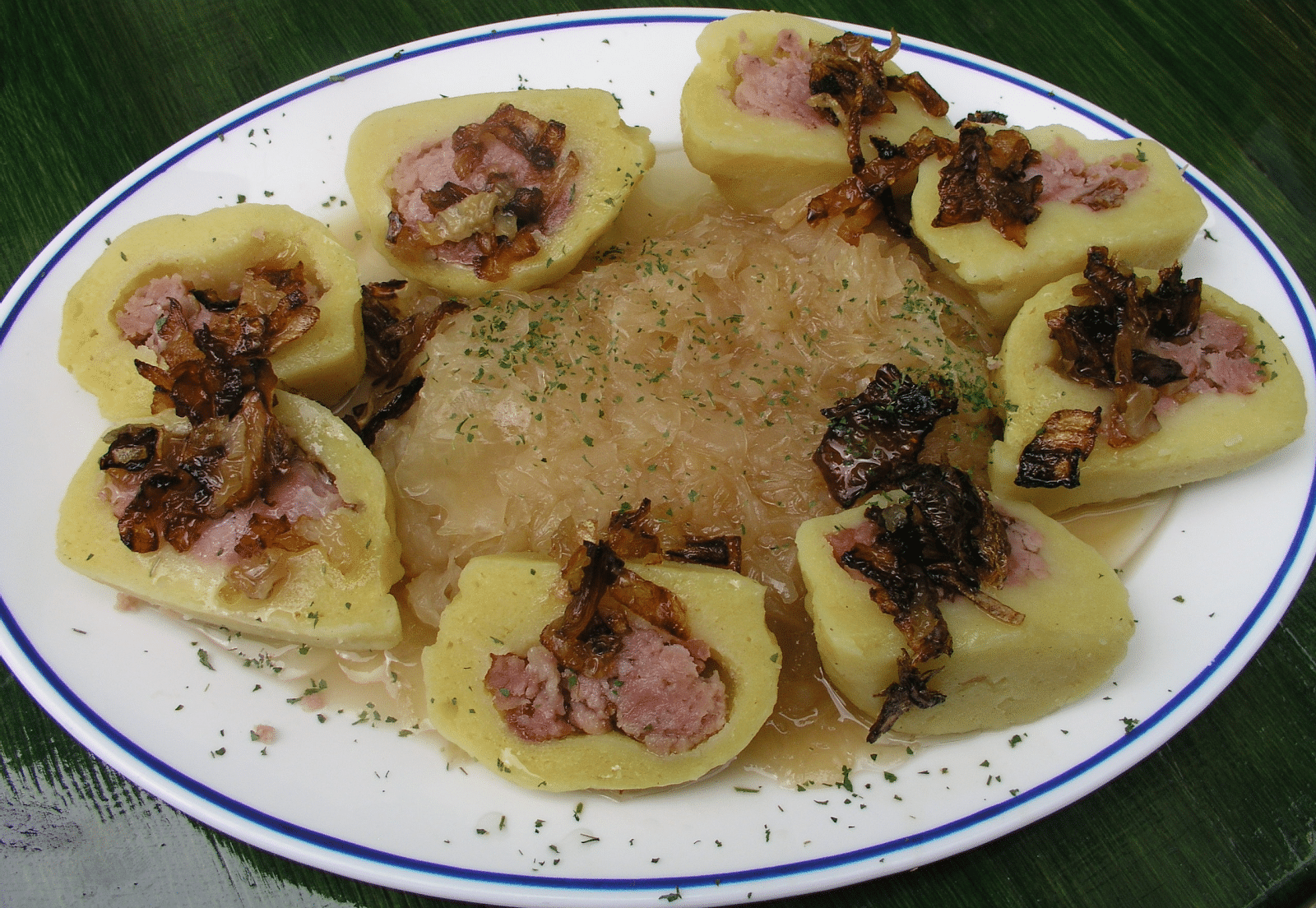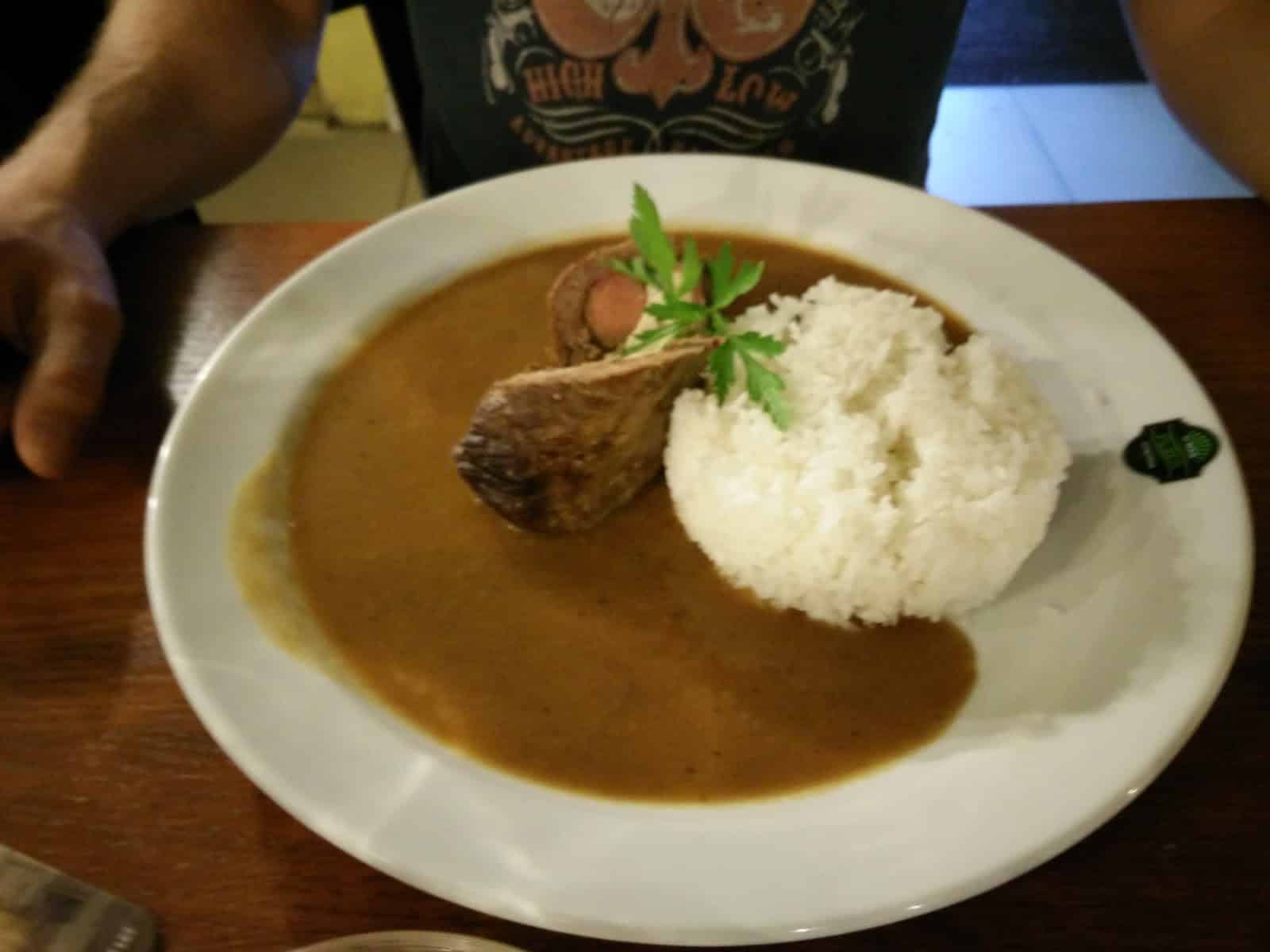3.7 – Restaurační jídla – Restaurant Dishes
|
So here are some common items you’ll find on restaurant menus. You don’t have to necessarily memorize all of these, but if you ever eat out, it’ll be good to at least recognize the names so you’re not throwing a dart at a dartboard, so to speak.
Many of these foods are also frequently made at home, though some of the more elaborate dishes are saved for restaurants or special occasions. |
Polévky
|
As we’ve learned, Czechs are very fond of soup, especially for lunch. Here are some very common soups that you might find on a menu: |
|
|
|
|
|
česnečka, which is short for česneková polévka is probably one of the most beloved soups. Česnečka is also often touted as a cure for a hangover and it’s not uncommon to see someone eating česnečka on a Sunday morning. |
čočková polévka (s uzeným masem) is also very common on Czech menus. Frequently they will have some sort of smoked meat (uzené maso) cooked in it as well. |
|
|
|
|
cibulačka, which is short for cibulová polévka is also a very common soup and is often ascribed some of the same properties as česnečka.
|
knedlíčková polévka – you can probably see the word knedlík in here, though these dumplings are actually made out of ground meat. Sometimes they will be made out of ground liver, making a liver dumpling soup.
|
Saláty
|
Salads are by no means obligatory, but often form a good intro to your meal. Some people take the approach – “Why eat salad when there’s so much good meat?”, whereas others prefer to balance their meals with some vegetables. If you find yourself wanting more vegetables in your diet (since main courses typically lack them), then order a salad to start off. Lettuce salads aren’t super common, and instead Czechs gravitate toward chopped salads. Here are a few common ones: |
|
|
|
|
|
šopský salát – taken from Bulgaria, this salad is on most menus. Paprika, okurka, rajče, cibule a balkánský sýr (feta cheese – literally Balkan cheese). |
okurkový salát – a small amount of sugar is added which makes the salad a bit sweet. This is a Czech favorite. |
Hlavní jídla
|
Now here are some of the more common Czech main dishes (hlavní jídla). These are not light on calories, but tend to give you energy to work (or play) for the rest of the day. |
|
|
|
|
|
guláš is a staple of Czech cuisine. Originally inspired by Hungarian gulyás, Czechs have made this one of their signature dishes. It can be made with hovězí maso, vepřové maso, kančí (boar) maso, jelení (venison) maso. |
smažený sýr (or short smažák) is a thick slice of breaded and fried cheese. It is typically eaten with some form of potatoes, most often hranolky or vařené brambory, though one can sometimes even find it with bramborová kaše (mashed potatoes). It is universally served with tatarská omáčka. |
|
|
|
|
řízek – they are pieces of meat (kuřecí, vepřové, or telecí ‘veal’) that are pounded out and then breaded and fried. Typically served with some variant on potatoes (hranolky, vařené brambory). Here they are pictured with bramborový salát. |
pstruh is a common fish on Czech menus, often cooked and served whole. This one here is served with kmín ‘caraway’, which is a common Czech spice. |
|
|
|
|
kachna – Czechs love duck meat (kachní maso) and it is often served with sauerkraut and a brothy sauce. Here a kachní stehno (duck leg). |
svíčková – basically the flavors of American thanksgiving on a plate. Braised beef in a sauce made out of pureed carrots and parsnips, served with houskové knedlíky, brusinky (cranberries) a smetana (cream). |
|
|
|
|
plněné (stuffed) bramborové knedlíky, zelí – just as you can stuff dumplings with fruit for a dessert version, so you can also find them stuffed with smoked meat. These are almost always served with dušené zelí. |
Vepřo knedlo zelo – the classic Czech dish of vepřové maso, knedlíky, zelí. Goes great with beer (like all Czech food). |
|
|
|
|
španělský ptáček s rýží – a Spanish bird??? Apparently that’s what you call a beef roulade stuffed with egg, pickled cucumber, and ham. Frequently served with rýže (or knedlíky), it is a staple on a lot of restaurant menus. Also, funny enough, since the name of it is Spanish bird, and since ptáček is animate, you have to order it using the masculine animate accusative ending – Dám si španělského ptáčka. |
halušky – technically a Slovak dish, it’s not unheard of to find this on Czech menus, and if not then definitely in neighboring Slovakia. They are small potato dumplings mixed with a sheep milk cheese called bryndza (you’ll sometimes see them referred to as bryndzové halušky). They are then topped with fried bacon. Related to this dish is the Slovak dish strapáčky , which is the same potato dumplings mixed with s sauerkraut and bacon.
Pozor! (careful!) – eat a plate of these on a hot day with a couple of beers and you’d better schedule a nap to follow. |
Images used in this document come from these sources.
